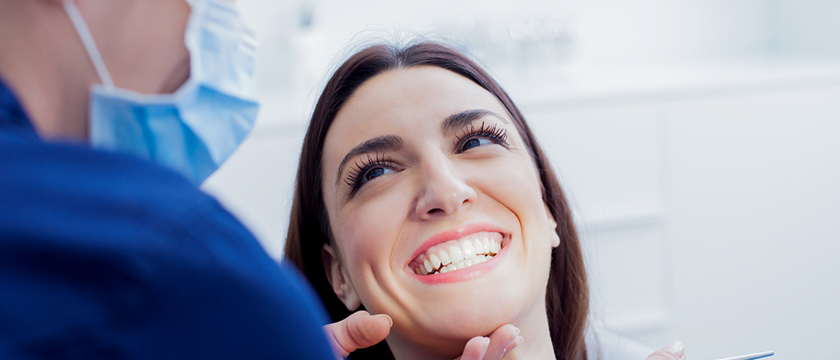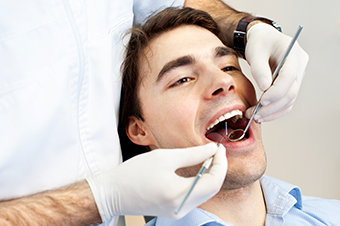 10 Apr 2023
10 Apr 2023
Dental cleanings are one of the most important oral health procedures you will receive at your dentist’s office. They keep your teeth clean and healthy, your gums free from disease, and your smile looking bright.
However, many people find them uncomfortable or even frightening to go through. If you are one of these people, our comprehensive guide to dental cleanings will let you know what to expect and will help put your mind at ease during your next dentist’s appointment.
What is Dental Cleaning?
Dental cleaning is the process of scraping plaque and tartar off of a patient’s teeth. Cleanings may be performed by dentists or dental hygienists and may involve a variety of tools, including polishers and metal or ultrasonic scalers.
Dental cleanings are essential to good oral health. They help prevent gum disease and tooth decay, and they even make your teeth look whiter afterward.
What Happens During a Dental Cleaning?
A typical dental cleaning happens in 6 stages.
1. A Physical Exam
All dental cleanings begin with a quick examination of your mouth. This step helps your dentist or hygienist determine how much tartar you have on your teeth, which tools they will need to use, and approximately how much time it will take to get the job done.
2. Removing Plaque and Tartar
Once your oral health needs have been assessed, your dentist or dental hygienist will carefully scrape the plaque and tartar off your teeth using a scaling instrument. This is the longest part of dental cleaning as well as the most important.
How long does a dental cleaning take? It depends, but most people are in the chair for at least a half hour. By the end, your teeth and gums will be free of tartar and feel smooth to the touch.
3. Polishing
When all the tartar has been removed from your teeth, your dentist or hygienist will polish your teeth with a special tool and a gritty paste. This process will scrape away any remaining particles of tartar and make your teeth look whiter and shinier than before.
4. Expert Flossing
Once the toothpaste has done its job, your dentist or hygienist will carefully floss any remaining plaque from between your teeth. Their expertise allows them to reach every nook and cranny in your teeth and gums, including those hard-to-reach spots you may miss during your own flossing routine. This ensures that your mouth is as clean as possible when you leave your dentist’s office.
5. Rinsing
After your cleaning is complete, your dentist or hygienist will give you a cup of liquid fluoride solution to rinse with. You will be asked to swish this solution around in your mouth and then spit it into the office’s sink. This will remove any debris from your mouth and give your teeth a small fluoride boost.
6. Application of Fluoride Treatment
Depending on your needs, your dentist may end your cleaning with a fluoride treatment to help strengthen your teeth. The fluoride will be applied to your teeth in either foam or gel form. You will then be asked to keep that foam or gel on your teeth for a few minutes before rinsing it off.
Other Potential Steps
During one of the two cleanings you should receive each year, you will also need to get dental X-rays done. These X-rays will help your dentist assess your oral health in greater detail and identify problems like tooth decay, tooth resorption, and bone loss.
Depending on your age, decay risk, and other factors, your dentist may recommend additional procedures during your cleaning appointment. For example, many young children have sealants applied to their molars during a dental cleaning to help protect their teeth while they learn to master brushing and flossing.
Who Should Get a Dental Cleaning and Why?
Everyone should visit their dentist for a dental cleaning at least once every 6 months. Some people with heavy tartar build-up, severe gum disease, or other oral health problems may need more frequent cleanings.
Adhering to this schedule keeps your teeth smooth and makes it difficult for bacteria to stick to them. This protects your teeth and gums from disease and gives you the best chance of maintaining good oral health for life. Seeing your dentist frequently also allows them to catch and treat any oral health problems you may be developing as early as possible.
Possible Complications and Risks
Dental cleanings are completely safe when they are performed by a qualified dental professional. However, performing a cleaning improperly may injure your gums or damage your enamel.
Do not attempt to perform a dental cleaning on your own teeth or on a friend’s or family member’s teeth. If you do not have the correct training, you will probably cause more harm than good. Leave the job to the professionals who have the tools and expertise needed to do it safely.
Dental cleanings may also be uncomfortable for some people, especially those with a history of gum disease. Any pain you experience is usually mild and can be managed with over-the-counter pain medication. Your teeth may also be slightly sensitive for a few days after your cleaning. Both the sensitivity and the pain should subside within a week of your cleaning appointment.
Get a Stress-Free Dental Cleaning in Mississauga

Are you due for your next dental cleaning? Trillium Smile Dentistry is the place to go. Our friendly staff understands that cleanings make many patients nervous, so we do everything we can to help you relax and unwind while you are in our care.
We are always happy to answer any questions you may have about dental cleaning costs, the tools we use, or any other aspects of our services. Contact us today to book your next dental appointment and see what a pleasant experience a dental cleaning can be.
